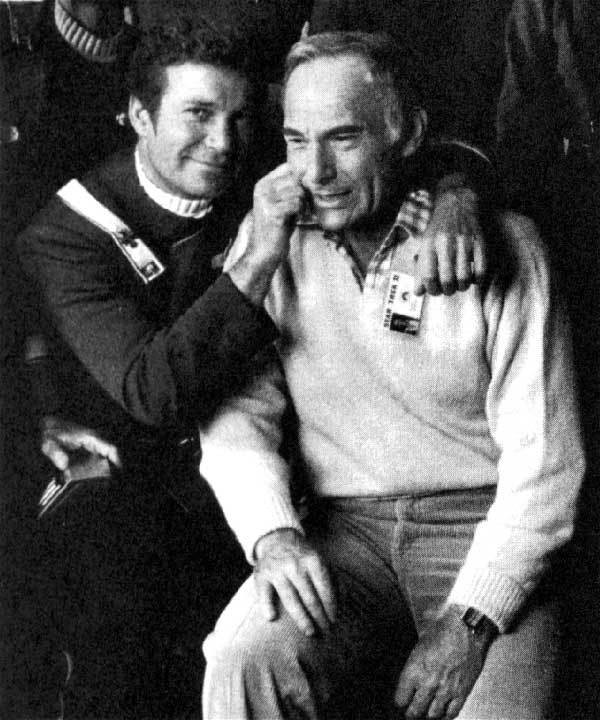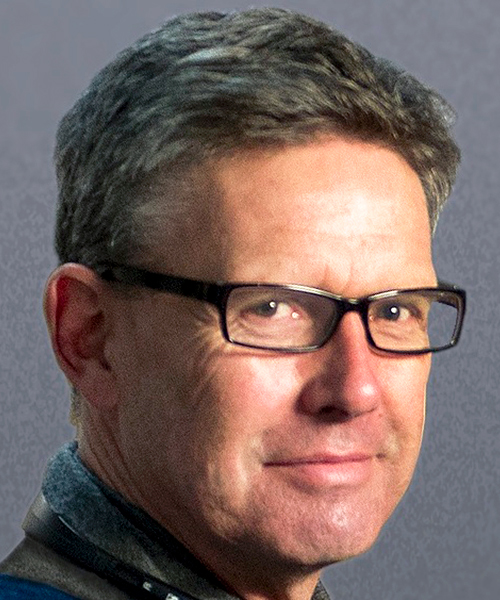The Star Trek VI That Wasn’t
After the critical and financial disappointment of Star Trek V, it took the personal intervention of Paramount CEO Frank Mancuso Sr. — who had been involved with Star Trek since the second motion picture — to make a sixth movie at all. Mancuso refused to allow the series to end on the low note of The Final Frontier, especially with the quarter-century anniversary of the franchise coming up in 1991.
But even Mancuso had to face reality. To make a sixth movie possible, it couldn’t cost more than the last one.
To save money, Harve Bennett, who had produced every Star Trek film since The Wrath of Khan, went back to the idea of a prequel that had originally been raised by Ralph Winter for Star Trek IV.
The original cast, of whom William Shatner and Leonard Nimoy had become particularly expensive, would only appear in brief scenes. The rest of the movie would be about Kirk and company at Starfleet Academy, played by younger, and cheaper, actors.
The Academy Years

Bennett and The Final Frontier writer David Loughery wrote a script entitled The Academy Years, also known at some point as The First Adventure.
In it, Leonard McCoy reminisces to cadets how he met Kirk, Spock and Scotty at Starfleet Academy. The movie would have established that George Kirk, Jim’s father, disappeared during a warp experiment with Scotty. Set before the “enlightenment” of the Federation, racism is still prevalent and Spock is bullied as the only Vulcan student.
In an interview for the 2004 DVD of Star Trek IV: The Undiscovered Country, Lougherty described the idea as a mix of Top Gun and Star Trek, “in which this rambunctious, willful Iowa farmboy, Jim Kirk, goes to Starfleet Academy and meets up with this misanthropic, misunderstood, brilliant Vulcan, who is the first Vulcan ever to attend Starfleet Academy.”
We’ve got a young Jim Kirk, who’s kind of cocky and wild. He’s not exactly what you might think starship captain material might be. He’s like one of these kids who would rather fly hot planes and chase girls. Spock is this brilliant, arrogant, aloof to the point of obnoxiousness, genius. It’s this mask he’s hiding behind to cover his own conflicting Human emotions. He’s an outcast, he left Vulcan in shame against his father’s wishes and, like all adolescents, he’s trying to find a place to fit in, but he keeps screwing it up.
Ain’t It Cool News has a more complete outline.
Negative reaction
Mancuso gave the go-ahead, but nobody else liked the idea. Walter Koenig tipped off fans in an interview with Cinefantastique in May 1990 (My Star Trek Scrapbook has the full version).
However you interpret this — that the story [of Star Trek V] was not as satisfying to the public, or that interest in the cast is beginning to wane because of their “advanced age,” or even “familiarity breeds contempt” — the feeling is that “fresh” faces might be more appealing to a somewhat jaded public.
Gene Roddenberry hated the idea, telling the same magazine in late 1991, shortly before his death (again, My Star Trek Scrapbook has the full version):
Some of it was like Police Academy. You could hardly do this without the magic of a group of characters tailored for Star Trek, which this was not.
Fans started writing in to object

Lougherty was caught off guard by the negative reaction and blamed misinformation. “Somehow,” he said, fans “conceived it as sort of a spoof or a takeoff. That’s where we got off on the wrong foot.”
Harve’s always been smart enough to double-cross them; given them what they’ve objected to, but surprise them with something that makes it good and worthwhile. We felt that there was a powerful story there, one that the audience would be interested in. We’re always interested in young Indiana Jones and young Sherlock Holmes, and how they started and came to be who they are. This was sort of the way to explain Kirk and Spock and where they came from.
Canceled
It wasn’t until Martin S. Davis, the CEO of Paramount’s parent company, found out about the Academy project that it was canceled. He demanded a movie with the original cast.
By then, production had already been underway for months. Bennett, appalled by the messy process, promptly left Star Trek.
“He obviously did not realize the strength of the old cast,” James Doohan told Cinefantastique in April 1992.
You don’t do that sort of thing, trying to destroy instead of building. The whole thing would have been starting out as if from scratch.
Bennett was still bitter years later, telling the official Star Trek website, “It was the best script of all and it never got produced.”
I had an eye on John Cusack for Spock, which would have been great. Ethan Hawke could have been Kirk. There were so many possibilities. But basically it was a love story and it was a story of cadets, teenagers. And, in order to get Shatner and Nimoy in, we had a wraparound in which Kirk comes back to address the Academy and the story spins off of his memory. At the end, Kirk and Spock are reunited and they beam back up to Enterprise, which would have left a new series potential, the Academy, and a potential other story with the original Trek cast. All the possibilities were open, the script was beautiful, and the love story was haunting, but it didn’t happen.
Mancuso turned to Leonard Nimoy to create a proper sendoff for the original Star Trek crew. He in turn consulted with Nicholas Meyer, who had co-written and directed The Wrath of Khan, and the two decided to use the collapse of the Soviet Union and the end of the Cold War as inspiration for The Undiscovered Country.
